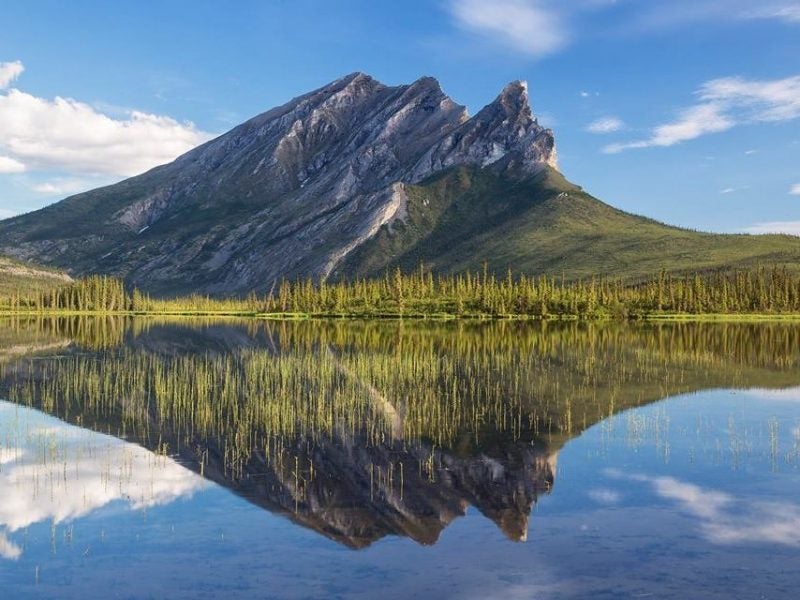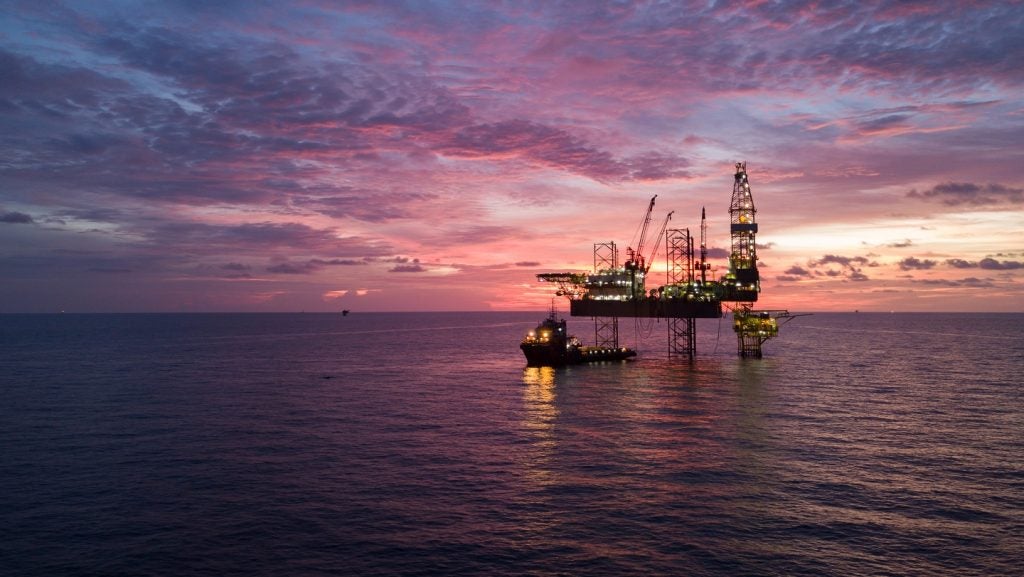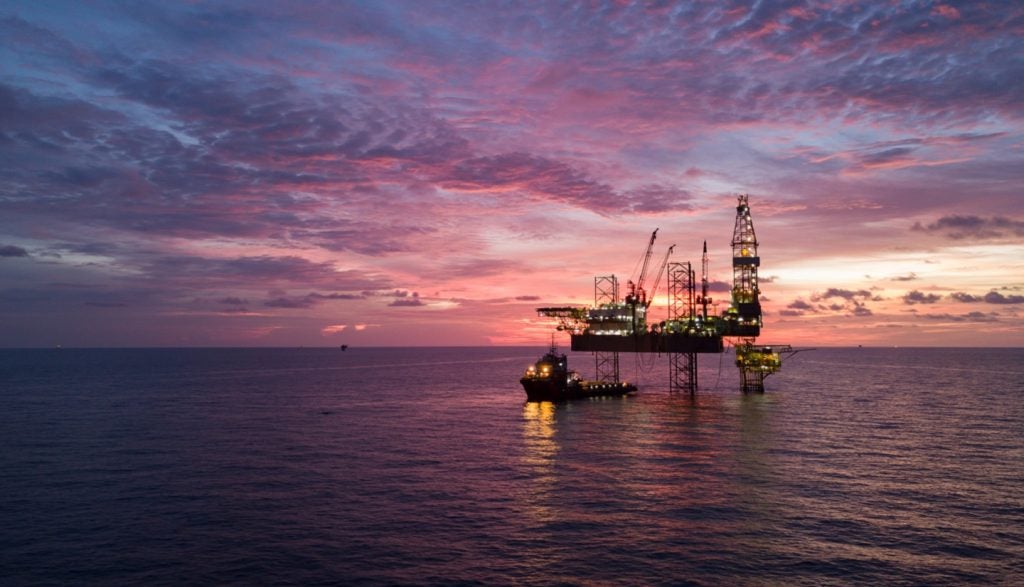
Plans to extend oil exploration into the protected Arctic National Wildlife Refuge (ANWR) have been bandied about since the area was first given its protected status in the 1980s. In recent years, President Trump has made taking over the area a large part of his campaign, calling its coastal plain ‘one of the great potential fields anywhere in the world’ in a speech addressing fellow Republicans in 2018.
Earlier this year, Interior Secretary David Bernhardt announced the department’s Bureau of Land Management (BLM) had finalised a plan for the 1.5 million-acre coastal plain, one which opens the entire space up for leasing with few restrictions on the carbon footprint of potential operations. According to the BLM report, oil extracted from the area could put the equivalent of anywhere between 0.7 million and 5 million metric tons of carbon dioxide in the atmosphere each year.
While the move could certainly prove beneficial for the state’s rocky economy, it has sparked widespread backlash from environmentalists, and polls have shown it is opposed by up to 70% of Americans. Leases for exploratory drilling on the coastal plain could be sold by the end of the year, but such a divisive beginning begs the question of just how successful the measure will be.
Why expand into the Arctic Refuge?
Alaska has been in a gradual state of economic rebound over the past few years, regaining ground following a collapse in oil prices in late 2015 – dropping from over $100 per barrel to $30 per barrel. Rebuilding the oil and gas industry has been an imperative for the state to facilitate economic growth, as over the past four decades the sector has contributed to around 85% of the state’s budget.
With production from the most lucrative oilfield of Prudhoe Bay beginning to decline, expanding the state’s oil industry to incorporate the ANWR is seen by some as a sure-fire way of revitalising the sector, with the US Geological Survey estimating the plain to hold 10.4 billion barrels of oil.
“Alaska’s economy depends on a thriving oil and gas industry,” says Sean Clifton, policy & program specialist at the Alaskan Department of Natural Resources oil & gas division. “The coastal plain of the ANWR was specifically set aside by Congress as a highly prospective oil and gas region.”
How well do you really know your competitors?
Access the most comprehensive Company Profiles on the market, powered by GlobalData. Save hours of research. Gain competitive edge.

Thank you!
Your download email will arrive shortly
Not ready to buy yet? Download a free sample
We are confident about the unique quality of our Company Profiles. However, we want you to make the most beneficial decision for your business, so we offer a free sample that you can download by submitting the below form
By GlobalData“Opening additional North Slope areas for new resource development has the potential to expand the number of pools contributing to Alaska’s oil production, slow decline in the trans-Alaska Oil Pipeline’s throughput, maintain revenue to the state from royalties and corporate income, production and property taxes, and sustain high-wage employment and business activity in the state economy,” he adds.
Even members of the Inupiat (traditional owners of the land where drilling is proposed) have voted in support of the measure – incentivised by the promise of tax revenues, which could be used to fund infrastructure projects.
“While there are groups that strongly oppose oil drilling in ANWR, in general there is overwhelming support for drilling in Alaska, and that is unchanged in 40 years,” says Alaska climate specialist Rick Thoman from the Alaska Center for Climate Assessment and Policy.
Yet the economic benefits of the proposal are a point of contention. Jenny Rowland-Shea, senior policy analyst of public lands at the Center for American Progress, in fact labels the opening of the ANWR a ‘bad financial decision’ for both companies and taxpayers.
“Leases are estimated to yield no more than $37.5m in revenue for the US Treasury over the next 10 years,” she says, “far short of the $1bn that drilling proponents claim could be raised. Companies must know that leasing in the Arctic Refuge is risky, unpopular, and legally questionable.”
Beyond the potentially uneconomical aspect of the proposal, widespread environmental criticism has trailed after the measure and cast doubt on its passing.
An unpopular decision?
Speaking with Kristen Miller, conservation director at the Alaska Wilderness League, she says opening the area to oil exploration would cause ‘serious biological, cultural and climate impacts’ on the region, which acts as a home to polar bears, porcupine, caribou, and nearly 200 species of migratory birds – 69 of which the Trump administration has said will go extinct as a result of drilling.
“The Arctic Refuge is one of our nation’s most majestic and sacred public lands, and it supports the greatest variety of plant and animal life in the entire circumpolar north,” she says. “The Trump administration and drilling advocates are looking to deploy a small army of industrial vehicles and equipment with a mandate to crisscross every square inch of the Refuge’s biological heart.”
Oil exploration in the area could, according to the BLM report, require energy companies to use water from the area’s limited supplies, and result in a loss of habitat for wildlife. The heavy use of machinery could cause additional injuries and deaths of wildlife due to collisions.
“To say that drilling in the Arctic Refuge can proceed without causing harm to the Arctic environment, is an egregious falsehood,” says Miller. “Dangerous oil drilling will compound the devastating climate impacts already being felt in the Refuge, allowing for the exposure of carbon emissions. It would worsen climate pollution, harming communities already bearing the brunt of the changing climate.”
Miller also joins those who say the environmental review process was insufficient – saying the Trump administration ignored evidence laid out by scientists during the process. Similarly, the US Fish and Wildlife Service said the environmental impacts of potential drilling had been ‘minimised’ and sometimes even omitted by BLM. The proposal has already been threatened with challenges in court, and the CEO of Defenders of Wildlife, Jamie Rappaport Clark, called the plan ‘categorically illegal’ in a press release.
However, Lesi Ellis-Wouters, communications director for the BLM says the EIS does not itself authorise any on-the-ground exploration activities but rather was intended to simply analyse the Oil and Gas Leasing Program.
Ellis-Wouters says: “Future on-the-ground actions requiring BLM approval, including potential exploration and development proposals, would require further National Environmental Policy Act analysis based on the site-specific proposal.”
Regardless of the controversy surrounding this proposal, hopes appear to be high for the state’s oil industry.
“The future of oil in Alaska is bright,” says Clifton. “We have seen significant new discoveries on the North Slope, and anticipate them coming into production in the next few years. Oil continues to be Alaska’s most important resource, and remains an inexpensive, abundant form of portable energy which continues to be highly valued by world markets.”





